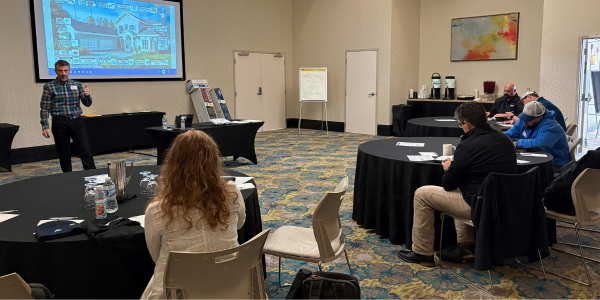Get the most out of your roof’s performance with metal roofing

By Anna Lockhart.
Metal roofing is a great option for homeowners looking for a durable, long-lasting roof.
Editor’s note: The Metal Roofing Alliance (MRA) has organized the Residential Metal Roofing Buyer’s Guide to help homeowners learn about the basics of roofing. This article discusses the different kinds of roofing materials using a passage from the guide.
For the homeowner looking to invest in a roofing material designed to withstand the elements of various regions and climates, there’s no better option to consider than metal. As metal roofing can be a major investment, it’s important to consider the benefits and performance capabilities of metal roofs before making the educated decision to invest in one. Dedicated to providing home and building owners with the basic knowledge and resources about metal roofing, the Metal Roofing Alliance has created the informative Residential Metal Roofing Buyer’s Guide, which touches on the topic of metal roofing materials and their performance capabilities.
Metal roofing is a top choice for regions with challenging weather conditions due to its durability and versatility. Here's a brief overview of how metal roofing stands out in key performance areas:
Energy efficiency: Metal roofing is available with "cool" coatings that reflect heat, reducing energy costs for heating and cooling. This can lead to significant cost savings for homeowners.
Solar compatibility: Metal roofs are ideal for solar panels due to their long lifespan, often outlasting the solar panels themselves. Additionally, mounting solar panels on metal roofs typically doesn't require penetrating the roof, reducing the risk of water damage.
Noise: Contrary to popular belief, metal roofing doesn't amplify noise during rain or adverse weather. It is as quiet as other roofing materials when properly installed.
Lightning safety: Metal roofs do not attract lightning. If struck, the metal roof disperses electricity over a large area, minimizing damage and risk.
Environmental impact: Made from recycled materials, metal roofing is 100% recyclable at the end of its life, reducing landfill waste.
Snow and ice resistance: Metal roofing can handle heavy snow and ice loads. Its smooth surface encourages snow shed, reduces ice damming and snow guards are readily available.
High wind and hurricane resistance: Metal roofs can withstand winds exceeding 140 mph, providing protection during hurricanes and high winds. They also offer good resistance to debris impact.
Wildfire resistance: When combined with appropriate roofing system components, metal roofing achieves a Class A fire rating, indicating high resistance to fire.
Hail resistance: Metal roofing meets UL 2218 Class 4 standards, qualifying for Severe Hail requirements defined by insurance companies.
Metal roofing offers a durable, low-maintenance and eco-friendly option for homeowners. When investing in a new roof, consider the specific weather conditions in your area, your budget and the roof's structural requirements. This information will help guide your decision and ensure you choose the best roofing solution for your needs.
Learn more about Metal Roofing Alliance (MRA) in their Coffee Shop Directory or visit www.metalroofing.com.
About Anna
Anna Lockhart is a content administrator/writer for the Coffee Shops and AskARoofer™. When she’s not working, she’s most likely to be found with her nose in a book or attempting to master a new cookie recipe.























Comments
Leave a Reply
Have an account? Login to leave a comment!
Sign In